When most people envision a professional dog walker, they might picture a solitary individual handling a handful of small, fluffy dogs, perhaps in a bustling city park. Or, perhaps, a veterinary student earning extra income on the side. While these scenarios do exist, the reality of a dedicated, professional Walking Dogs Job often involves far more complexity, skill, and dedication than commonly perceived. We had the opportunity to visit “Donau Dogs,” a professional dog walking service run by a friend and her partner, to gain an authentic insight into what this role truly entails.
The core of their operation involves taking groups of dogs for morning walks. They typically manage up to ten dogs, with two handlers – five dogs per person, plus their own two canine companions. This level of group management demands an extraordinary degree of focus and a superior ability to interpret canine body language. With so many personalities and instincts at play, situations can escalate quickly if not handled by an expert.
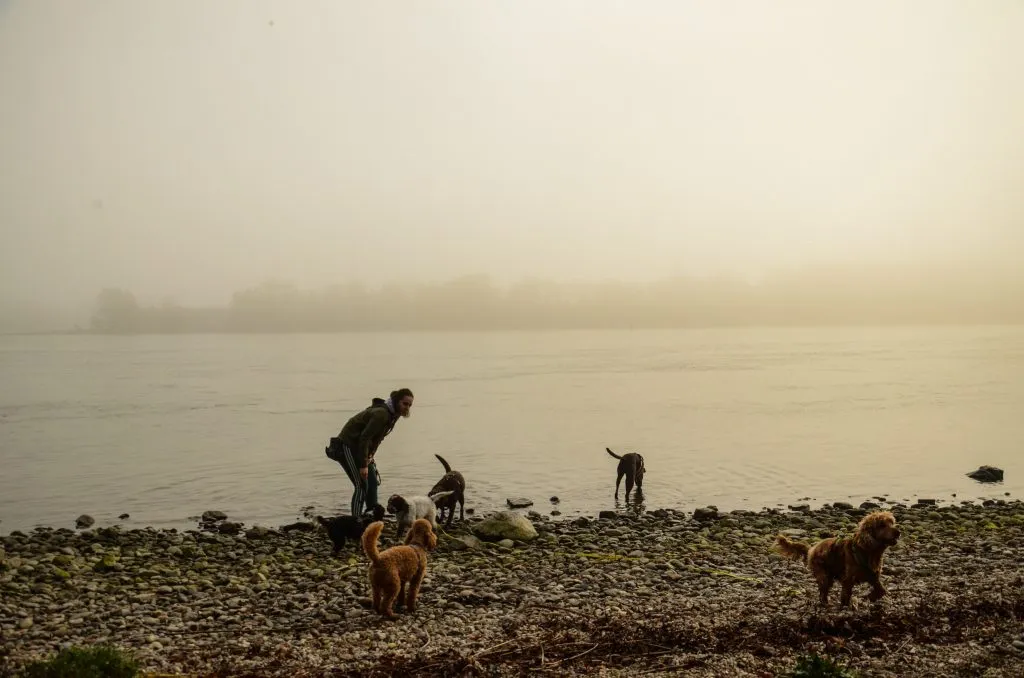 A professional dog walker with a large group of diverse dogs on a scenic outdoor path, demonstrating expert group management.
A professional dog walker with a large group of diverse dogs on a scenic outdoor path, demonstrating expert group management.
What a Professional Dog Walking Job Truly Involves
A successful walking dogs job requires a comprehensive skill set that goes beyond simply holding a leash. It’s about creating a safe, stimulating, and positive experience for every dog under your care.
Managing Group Dynamics and Canine Communication
Effectively overseeing a large pack of dogs is an art. It’s not just about preventing fights; it’s about understanding the subtle cues of each dog, recognizing potential stressors, and fostering harmonious interactions. Professional dog walkers must be constantly aware of every dog’s mood and interaction, ready to intervene or redirect attention when necessary. This vigilance ensures the safety and well-being of the entire group.
 Close-up of a group of well-managed dogs walking together, highlighting the focus required for a walking dogs job.
Close-up of a group of well-managed dogs walking together, highlighting the focus required for a walking dogs job.
The Art of Route Planning and Environmental Enrichment
Choosing the right location for a walk is absolutely paramount. The fewer other dogs encountered, the less the walkers have to “police” their group, allowing for a more relaxed and natural experience. Contrary to popular belief, these dogs don’t always need to embark on a 10km hike. Sometimes, they cover barely 1km.
However, consider this in “dog terms”: the trip is bursting with stimuli. Someone picks them up, they travel by car, they get out, walk, sniff, play, search for food, and observe what their companions are doing. All these activities are incredibly tiring and enriching for a dog. This mental and sensory engagement is often more beneficial than mere physical distance. Understanding the annual cost of dog ownership includes recognizing the value of such enriching experiences provided by professional services.
 Dogs interacting playfully in a group, showcasing the importance of understanding canine body language for a dog walking job.
Dogs interacting playfully in a group, showcasing the importance of understanding canine body language for a dog walking job.
Integrating New Dogs: A Gradual Adaptation Process
Bringing a new dog into an established group is a delicate process that requires careful management. A new dog typically joins the group after an adaptation period, during which their owner accompanies them. The duration of this period depends entirely on how quickly the individual dog becomes comfortable and integrated with the existing pack and the walker. Patience and keen observation are crucial to ensure a smooth transition.
 Dogs happily exploring a vast, open field, emphasizing suitable locations for professional dog walks.
Dogs happily exploring a vast, open field, emphasizing suitable locations for professional dog walks.
Off-Leash Decisions: Balancing Freedom with Safety
While most dogs eventually enjoy off-leash privileges, determining which dogs can be safely unleashed is a critical skill for any professional dog walker. Some dogs may have a strong prey drive or be overly excitable, making off-leash situations risky, especially when managing multiple animals. It’s simply not possible to provide the same level of individual attention when five or more dogs are running freely. This decision-making process is vital to prevent incidents and ensure the safety of all dogs. When considering the yearly expense of owning a dog, services that carefully manage off-leash opportunities provide significant peace of mind.
 A dog intently sniffing the ground, representing the rich mental stimulation provided during a professional dog walking job.
A dog intently sniffing the ground, representing the rich mental stimulation provided during a professional dog walking job.
Food as a Foundational Tool in Dog Management
Food, generously distributed, is one of the most important tools for a dog walker. Unlike their owners, these dogs have fewer inherent reasons to listen if something else grabs their attention. Treats serve as powerful positive reinforcement. As long as there are no resource guarding issues among the dogs and enough treats for everyone, fighting over food is rarely a problem.
Beyond rewarding good behavior, food can also be scattered for treat searches. Sniffing is an incredibly engaging and relaxing activity for dogs and can serve as an excellent distraction or calming technique. Naturally, any dietary restrictions or allergies must be strictly adhered to. Understanding dog food cost per month Canada, for instance, helps owners appreciate the value of professional walkers who manage treats and diets responsibly.
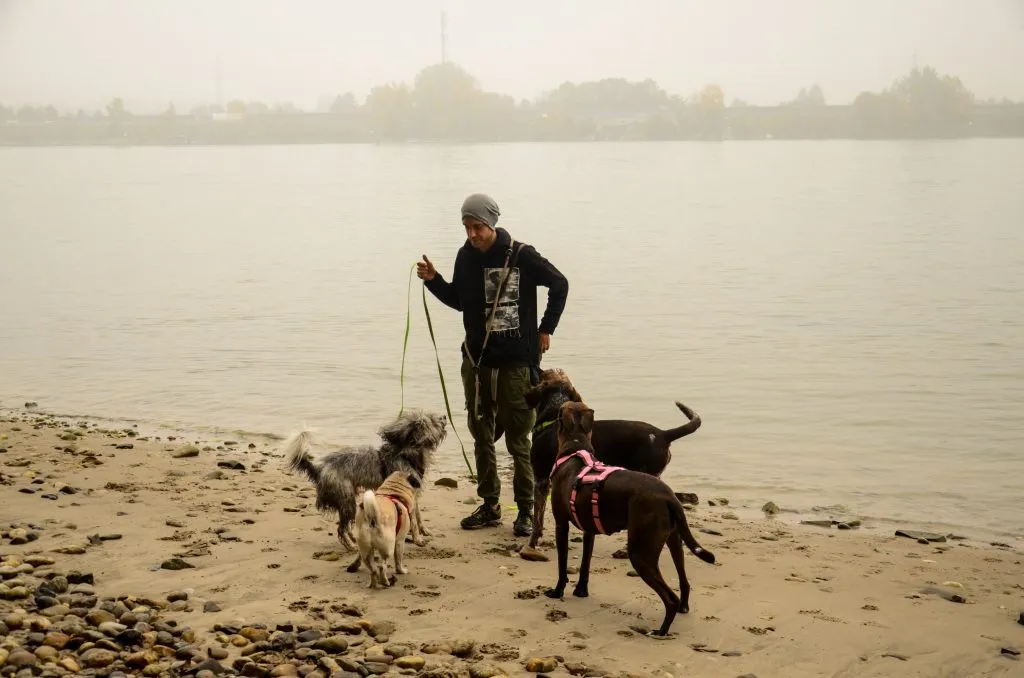 A new dog calmly observing its surroundings during an adaptation period, crucial for successful group integration in dog walking services.
A new dog calmly observing its surroundings during an adaptation period, crucial for successful group integration in dog walking services.
Respecting Individual Needs and Puppy Protocols
A truly professional walking dogs job necessitates respecting the special needs of each individual dog. For example, if a young puppy is part of the group and shows signs of wanting to rest and observe, it’s crucial to allow them that space and opportunity. This might mean pausing the walk or finding a quiet spot for the puppy to relax, ensuring their comfort and healthy development. This kind of personalized attention is often a factor in professional dog sitting rates Chicago, reflecting specialized care.
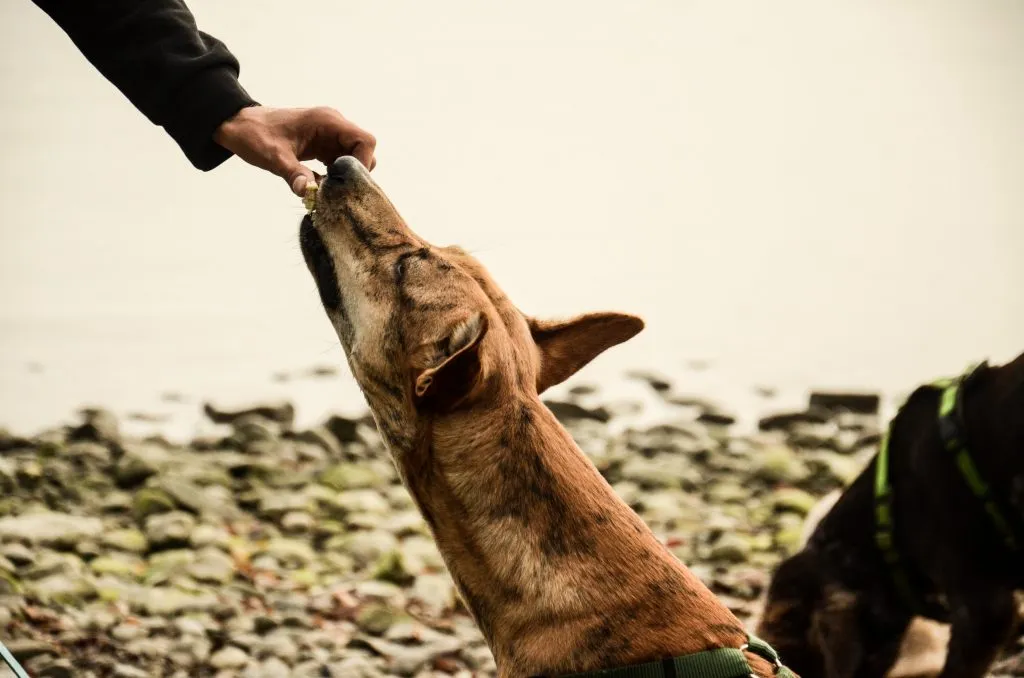 A group of dogs enjoying off-leash playtime in a grassy area, illustrating the trust and skill required in a professional walking dogs job.
A group of dogs enjoying off-leash playtime in a grassy area, illustrating the trust and skill required in a professional walking dogs job.
The Unseen Aspects of a Dog Walking Job
Being a dog walker is significantly more demanding than just playing with canine companions. A considerable amount of time, often as much as, if not more than, the actual walking time, is spent on logistics. This includes driving around to pick up each dog from their home and then safely returning them. Furthermore, the daily reality involves a fair amount of administrative work, managing schedules, client communications, and of course, a significant amount of cleaning to maintain vehicles and homes free of dog hair and dirt.
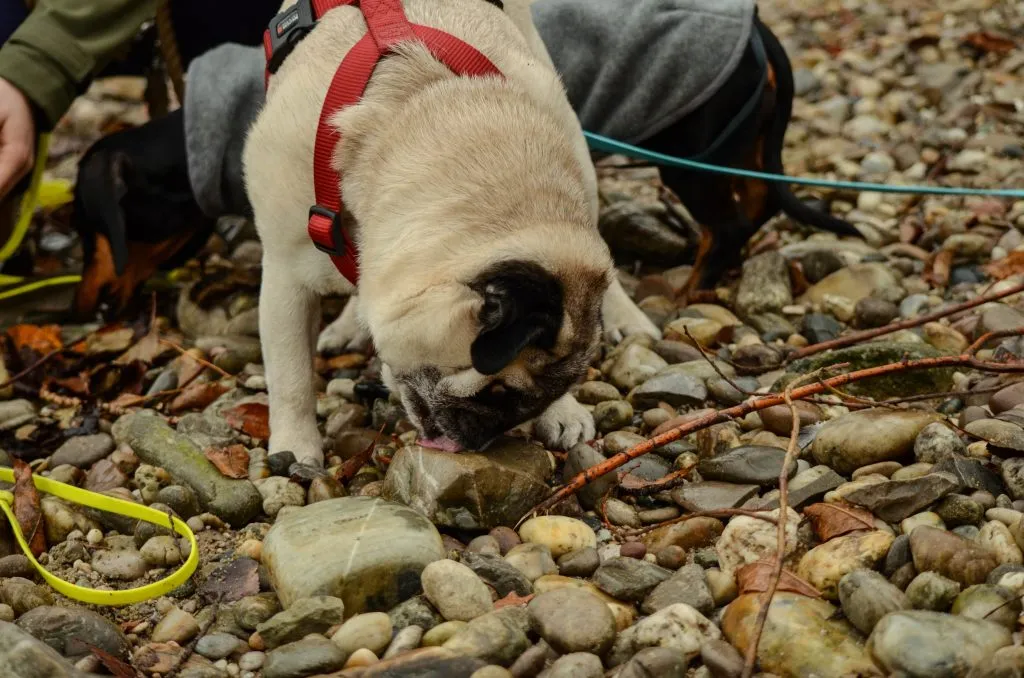 A dog happily taking a treat from a professional dog walker, highlighting positive reinforcement as a key tool for managing canine groups.
A dog happily taking a treat from a professional dog walker, highlighting positive reinforcement as a key tool for managing canine groups.
The Rewarding Outcome: Happy Canine Clients
While client satisfaction is important for any business, for professional dog walkers, the ultimate goal is the happiness and well-being of their canine clients. And what truly makes dogs happy is quite simple: they get to engage in “dog stuff.” This means ample opportunities to sniff, eat tasty treats, frolic with their friends, and occasionally, indulge in a good roll in something smelly. These simple pleasures, expertly facilitated by dedicated professionals, define the success of a walking dogs job.
 Multiple dogs calmly sharing scattered treats on the ground, showcasing effective treat distribution techniques in a walking dogs job.
Multiple dogs calmly sharing scattered treats on the ground, showcasing effective treat distribution techniques in a walking dogs job.
In conclusion, a professional walking dogs job is a multifaceted role demanding expertise in canine behavior, logistics, and client management. It’s a career built on passion for dogs, honed by experience, and dedicated to providing enriching, safe, and happy experiences for every furry friend. These professionals do far more than just walk; they provide a vital service that contributes significantly to a dog’s physical and mental well-being.
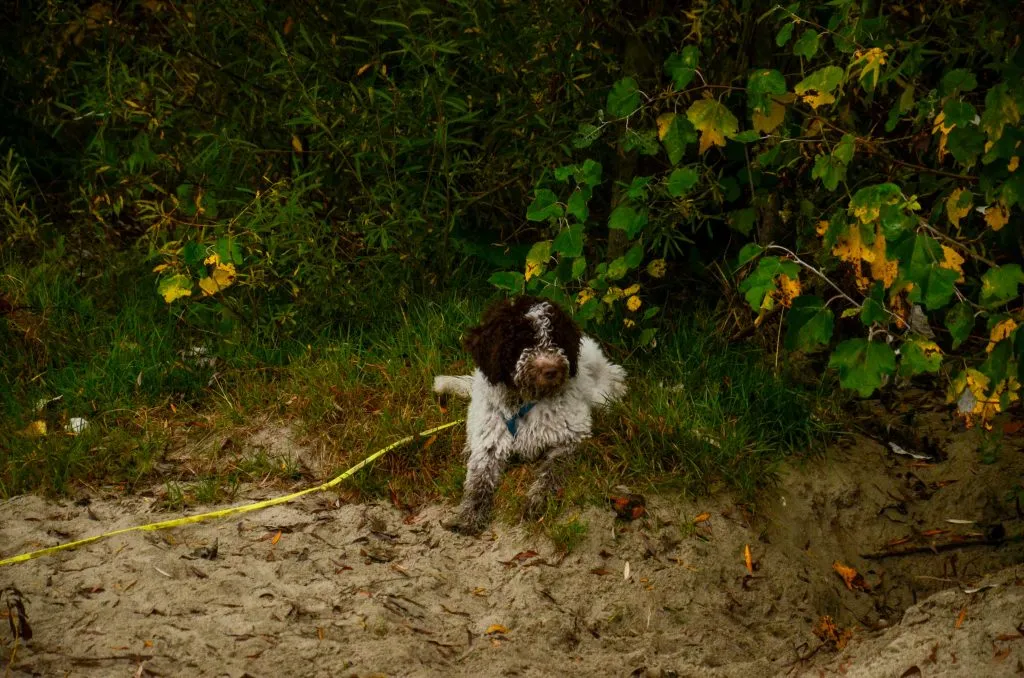 A dog deeply engrossed in a sniff search on the ground, demonstrating how scent work provides mental enrichment during a dog walk.
A dog deeply engrossed in a sniff search on the ground, demonstrating how scent work provides mental enrichment during a dog walk.
 A young puppy resting comfortably on the ground, illustrating the importance of respecting individual dog needs and special care in a dog walking job.
A young puppy resting comfortably on the ground, illustrating the importance of respecting individual dog needs and special care in a dog walking job.
